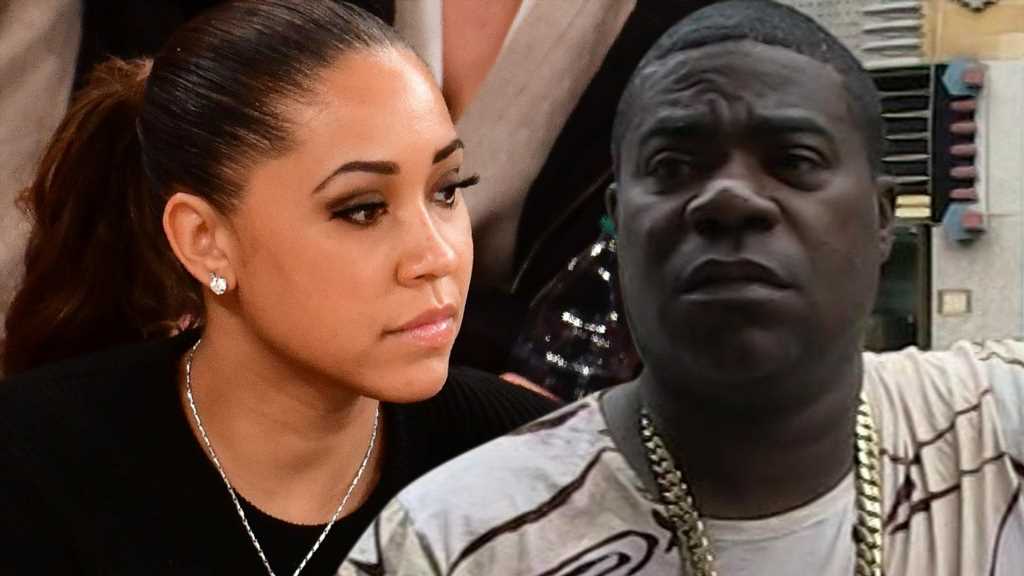For the past couple of years, a 23-year-old producer from the suburbs of Buenos Aires has been challenging the mainstream of Latin music, one viral YouTube video at a time.
Known to the world as Bizarrap, Gonzalo Julián Conde is one of the most streamed Latin American artists in the world thanks to his BZRAP sessions and their exhilarating fusion of hip-hop, trap, and EDM. Every month a new session pops up, featuring some of the most intriguing MCs in Latin rap – from Argentina’s L-Gante and Paulo Londra to Spain’s Ptazeta to San Jose, California-born Snow Tha Product to Puerto Rico’s Residente, whose Bizarrap freestyle made headlines this spring with its ruthless bars aimed at J Balvin.
Related Stories
Trueno Ushers in a New Era of Socially Conscious Rap en Español
Paulo Londra and Bizarrap Release Anticipated Session That Went Viral Before It Even Dropped
Related Stories

Album Guide: Metallica
Every Super Bowl Halftime Show, Ranked From Worst to Best
You only need to watch a couple of sessions to understand the rules of the game. There are 49 videos so far, numbered and posted in chronological order, each with a different rapper. Biza comes up with a backing track, then the guest MCs record vocals at the producer’s minimalist home studio, equipped with three cameras to record the visual portion of the collaboration. The space is small and purposefully nondescript — white surfaces, blue-green lighting, low ceilings, a Sony monitor hanging on the wall — intimating, somehow, that the magic at hand could be happening anywhere in the world.
Biza remains seated in the background, lifting his arms or dancing on his chair as the vocalists dominate the spotlight. More often than not, the resulting video exudes a certain indelible mystique, like being a fly on the wall during an impromptu session of brilliant minds. There is something strangely hypnotic about following the entire series, and YouTube videos featuring fan reactions have become a genre of their own.
“I totally understand the addictive qualities that music can possess,” Bizarrap tells me in his trademark tone — polite, articulate, cooler than cool. “I remember the feeling of discovering a new artist and wanting to hear everything else by them. I’m bringing to people what I’d like to find myself – an artist who releases a new song every month, based on his own taste and criteria.”
The strategy has certainly paid off. In late April, Bizarrap teased on Instagram that he would unveil his latest video — a “missing,” for legal reasons, session #23 with Paulo Londra — only if fans first left 23 million comments on his post. It took them 19 hours to reach the mark. As the videos’ audience has grown, he’s also begun to leave his mark on the wider world of music, co-producing the sensuous 2020 single “Mamichula” by Trueno and Nicki Nicole; earning a Best New Artist nomination at last years’ Latin Grammys; and positioning himself as a rare producer with undeniable star quality.
Securing an interview with Biza wasn’t easy. A trusted press agent offered to facilitate a Zoom meeting. Moments before the interview, I receive a phone call from the artist’s camp. Bizarrap is happy to talk, but no personal questions will be allowed. I suggest asking about which neighborhood in Buenos Aires he comes from, as an icebreaker. I’m told no, in no uncertain terms.
When the Zoom chat finally begins, everyone else in the call has turned off their video. Bizarrap’s voice sounds clear, yet somewhat distant. Onscreen, all I see is my own smile, looking slightly artificial.

Bizarrap wouldn’t have the following he does if the music didn’t transcend the gimmicky aspect of the videos. His tracks are funky and lush, with a DIY spirit that makes room for touches of EDM, unusual textures, and adrenaline-pumping breaks. Then, of course, there are the guests.
His session with Snow Tha Product (160 million views), for instance, is an almost surreal display of bilingual rapping at the speed of light. Argentine singer/songwriter Nathy Peluso (more than 300 million views, Biza’s biggest numbers so far) is edgy, combining Auto-Tune melody with sexual defiance and a wicked sense of humor. Buenos Aires rap star L-Gante (250 million views) adds ominous bass lines and cumbia beats to the mix.
“It was so much fun, because we worked on the beat together,” Peluso says from her home base in Spain. “We’re both passionate about hip-hop, and I wrote my rhymes based on an improvisation. We taped the video during a trip to Argentina and finished the track in a couple of days.”
Her video underscores another element that helps account for the popularity of Bizarrap’s sessions: While the music consistently pushes the envelope, the presentation remains casual and minimalistic.
“The visuals are representative of any aspiring teen producer – and that’s exactly what I was myself when I did my first videos at 19,” Bizarrap says. “I started in this same room with my speakers and FL Studio software, and I want people to identify with the space. I stand up for every single artist who started out recording tracks from their bedroom.”
“At the beginning, I didn’t quite understand the concept,” says 21-year-old Argentine rapper Nicki Nicole, who in recent times gained a global audience through a dazzling Tiny Desk Concert and subsequent performance at Coachella. “I was very nervous, because we were creating a song from scratch. He had different beats and tried a few until we found the best fit. Then he started adding layers. Biza has everything really thought out, and he made me feel confident when I recorded my vocals.”
Nicole points out an additional reason why Biza is highly respected among peers: He has opened up his studio to many women, offering them a safe creative environment where they can thrive.
“I’ve talked to other female artists who worked with him and we all agree on this,” she adds. “Biza is not only fucking amazing as a producer, but as a person, he provides the kind of security where we can feel confident and secure, and thus deliver the best version of ourselves.”

Biza admits that a few of the big artists he approaches have been taken aback by the casual vibe of his videos. Some have refused his offer to collaborate. “I have something like a homemade sticker album with my favorite rappers that I’d like to work with,” he says with a laugh. “I won’t stop until I have completed the album.”
Initially, local Argentine MCs like Duki and Lit Killah would send him a capella tracks that he would transform into EDM songs.
“I started incorporating EDM into my tracks around 2019,” he says. “I love changing genres in the middle of a tune. Maybe add drum loops in the bridge that don’t pop up anywhere else. I don’t really listen to trap. My personal playlist is mostly movie soundtracks and music from the Eighties and Nineties. I’m deeply influenced by the albums that my parents would listen to when I was growing up.”
Does the fact that millions of people listen to his tracks the instant they’re released stress him out? “There is some pressure, yes,” he admits. “But it’s also fun. This kind of exposure gave me the opportunity to learn my skills while a lot of people stood by watching. And I’m never afraid of learning.”
For all the controversy his series has sometimes caused, Biza has a strong desire to remain in the background. “I don’t want to call attention to myself,” he says emphatically. “I prefer to be looking at my computer, not the camera. I shine through the beats, creating a platform where my guests can feel comfortable and express themselves.”
Later on, he adds, “I never comment on the lyrics. My guests can say whatever they please.”
A couple of days after our conversation, Bizarrap drops session #49 — the one where Residente calls Balvin “an imbecile with dyed hair who put Black women with leashes on their necks” and grumbles, “This asshole is a racist and he doesn’t know it.” It immediately becomes one of the year’s most controversial and discussed tracks.
As soon as it was released, Bzrp Music Session 49 ignited a passionate debate because of the brutality with which Residente pummeled Balvin in his eight-minute, three-chapter rap diatribe, skewering both Balvin’s questionable artistic choices and the commercial music industry at large.

Some Balvin fans saw Residente’s downright cruel rhymes as bullying. To others, they were in keeping with a long tradition of tiraeras, or diss tracks, in Latin rap, where big stars such as Daddy Yankee, Tego Calderón, and Nicky Jam have all used music to settle scores with competitors.
Residente downplays the drama when I find him in Los Angeles. “Biza had sent me beats that I didn’t connect with, so instead, I invited him to come over here and start from scratch,” he says. It’s a balmy Los Angeles afternoon, and we’re sitting in the home studio of the lavish mansion where the rapper is staying while developing film projects, and where they re-created Bizarrap’s famous studio for their video. “Biza is a humble and generous guy.”
Residente feels that some of the response to his lyrics was misplaced. “The track is directed mostly to the music industry, which focuses on the business and stalls the development of art,” he adds. “Managers getting credited as songwriters, and such. The character I talk about at the end of the session could have been anybody. I picked [Balvin] because we have a previous beef, but what happens to him, happens to many others. That’s the sad truth.”
As for Bizarrap? When I track him down again to ask him for comment on the freestyle heard round the world, he’s characteristically low-key. “I was honored that Residente would want to rap on one of my tracks,” is all he’ll say. “He’s one of my all-time favorites.”
Source: Read Full Article


